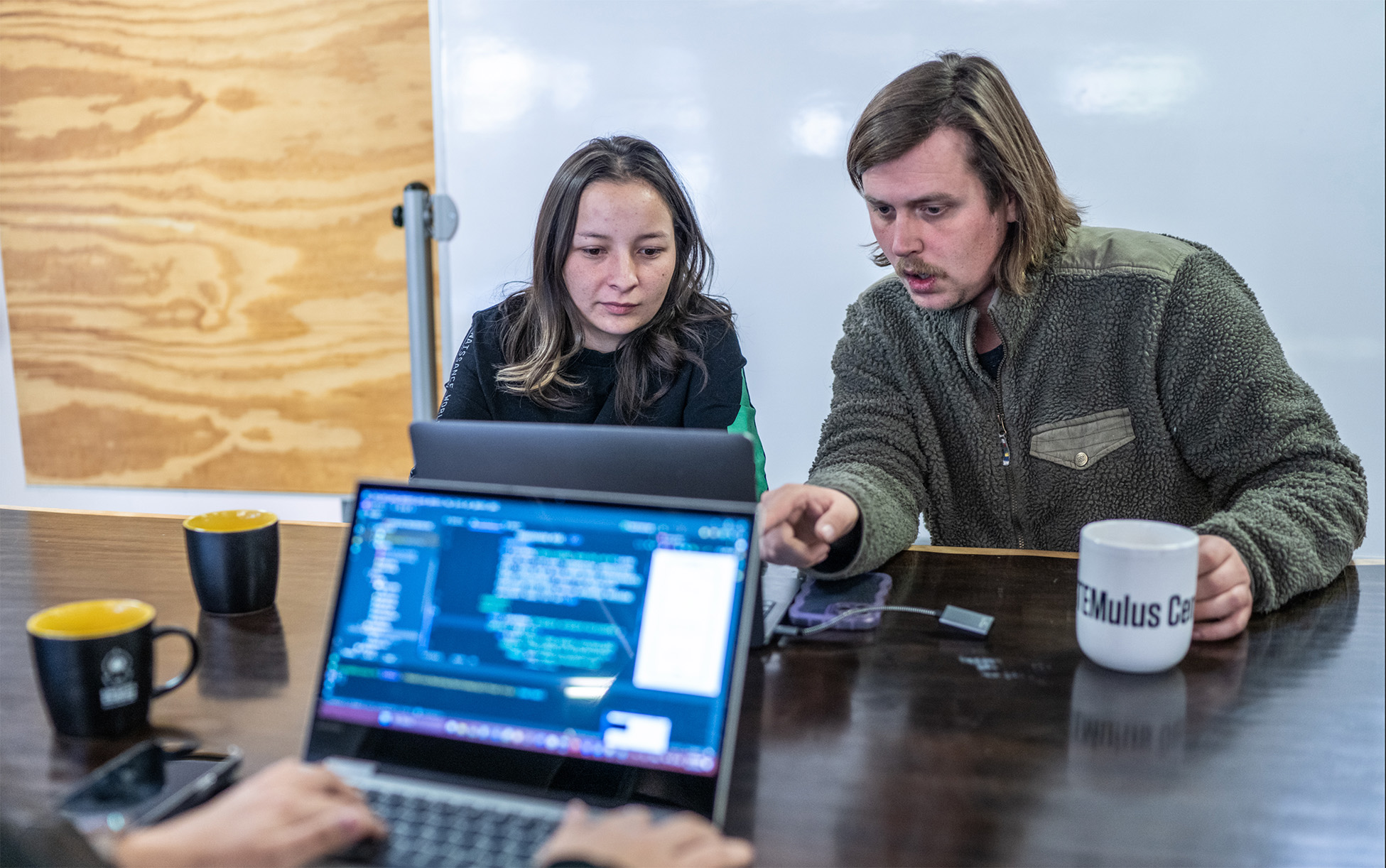
UX/UI Design
Learn how to use user research to create impactful designs on various software platforms.
What You Will Learn
In Deep Dive’s UX/UI Design class, you will learn the fundamentals of traditional design, user experience design, user interface design, and user research.
User Experience Design (UX) is about the interaction between the user, the product or service, and the design elements that shape that experience. User Interface Design (UI) is the point of interaction between the user and product that gives it a unique look and feel. Researching how individuals interact with products and services is a valuable skill, particularly when it comes to web and software development.
Our experienced instructors provide opportunities for you to fuse UX, UI, and user research together and create high-impact designs for websites, mobile apps, and more.
If you are curious about the UX/UI Design class but aren’t ready to register, please don’t hesitate to fill out our contact form, and we will answer any questions you may have.
Highlights
- Adobe Creative Suite (Acrobat, Illustrator, XD)
- Figma
- Marvel
- Miro
- Design elements
- Color theory
- Information architecture
- Research methods for User Experience Design
- Systems thinking
- Pitching ideas to employers and clients
Requirements
Our learners must have a willingness and ability to communicate, collaborate and work in teams.
Learners are also expected to have practical understanding and experience with computers, including an intermediate proficiency operating a laptop and mouse, navigating popular operating systems and search engines, creating documents, and adding/ starting/ removing applications and systems on personal devices.
Learners must use their own laptop in this class with an operating system of Windows 10OS or Mac 10.13 or above. Webcams, a working headset with a microphone, and a mouse for design software may also be required. Chromebooks and tablets are insufficient. For programs delivering asynchronous/online learning activities, reliable internet access with a minimum of 3.8Mpbs/3.0Mbps (up/down) is required.
Part-Time UX/UI Design Class
Schedule
- 15 weeks to completion with 150 hours of instruction
- Mondays and Wednesdays: 6 p.m. – 9 p.m. (MT)
- Saturdays: 9 a.m. – 1 p.m. (MT)
- 100% virtual, synchronous instruction
Dates and Deadlines
August 25 — December 18, 2025
Application Deadline: August 15, 2025
January 26 — May 9, 2026
Application Deadline: January 16, 2026
May 11 — August 22, 2026
Application Deadline: May 4, 2026
August 24 — December 7, 2026
Application Deadline: August 7, 2026
Cost and Tuition Assistance
Total Cost: $3,999
Tuition assistance is available.
Nine out of ten applicants receive 100% funding for their Deep Dive programs. Participants receiving financial assistance via scholarships or other funding sources may not have to pay a deposit or any tuition. Learn more about tuition assistance and the payment process.
Meet Your UX/UI Design Instructor

Melody Carlisle
Melody Carlisle has a Bachelor of Fine Arts in Design from Cornish College of the Arts and has worked with companies like Amazon, Starbucks, and KEXP. Melody currently works as a Lead Designer, VR Developer, and business consultant for branding, marketing and social media strategy. Melody loves to provide Deep Dive students with an ability to look at their world in systems and see how creative problem solving is a valuable asset to any industry.
What Our Students Are Saying
“Taking part in the UX/UI Design program was a great learning experience! In a short amount of time, I learned about user experience, user psychology, color theory, back-end design, graphic design and much more. This class was challenging but so rewarding. I would recommend it to anyone who is curious about digital design and needs a starting point.”
– Marivel M.
Credit for Prior Learning
Turn your completed non-credit training through Deep Dive into credit towards your degree or certificate program. Visit CNM’s Credit for Prior Learning page for more information.
